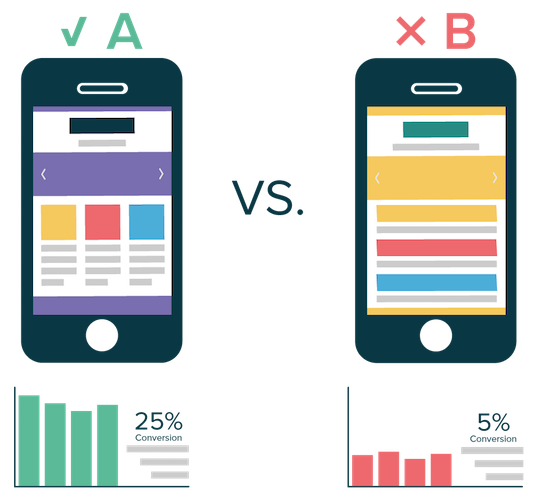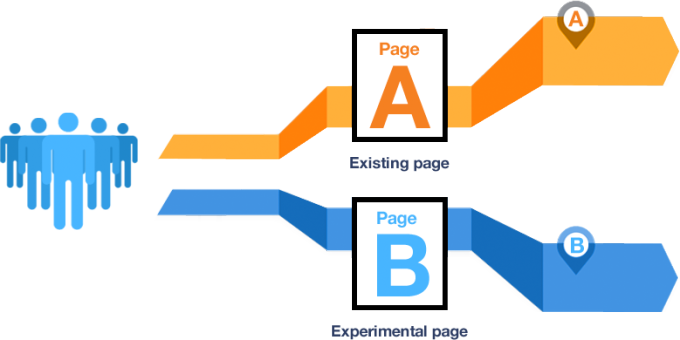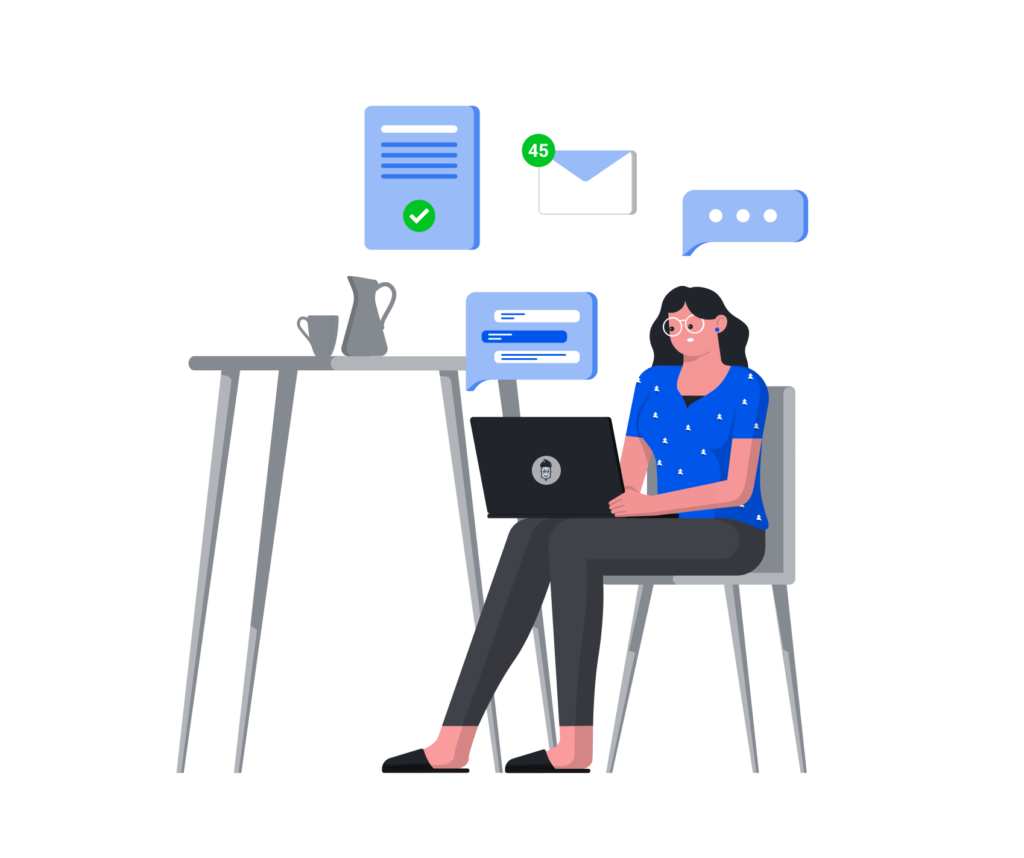Strategies to Improve Your Email open and Click-Through Rates with A/B Testing
A/B testing, in the context of email, is the method of sending one variation of your campaign to a set of your subscribers and a different variation to another set of subscribers, with the ultimate goal of understanding which variation of the campaign gathers the most effective results. A/B testing will vary in complexity, and simple A/B tests can include sending multiple subject lines to check that which one generates a lot of opens.
whereas more advanced A/B testing may include testing completely different email templates against one another to examine which one generates more click-throughs. Once the test has ended and therefore the winning version has been found, it’ll automatically send the winning version emails to the rest of your list.
For example: Below is the image which shows two different variations ie, Variation A and Variation B.
The first step in setting up a good A/B test is to decide what you’ll have to test. Whereas you’ll want to test more than 1 issue, it’s necessary to only test 1 issue at a time to get correct results. Things you may consider testing include:
- Subject line (Example ‘Discounts on product xyz’ vs ‘Product xyz on sale’)
- Call to action (Example: ‘Buy Now! vs ‘See plans & pricing’)
- Layout of the message (Example: single column vs 2 column, or completely different placement for various elements)
- Testimonials to include (or whether or not to include them at all)
- Body text
- Personalization (Example: ‘Mr. Paul’ vs ‘Smith’)
- Headline
- Closing text
- Specific offer (Example: ‘Get free shipping’ vs ‘Save 20%’)
- Images
The massive amount of emails hitting people’s inbox daily, your subject line is the one element standing between your email getting opened or thrown in the trash. Testing your subject line can provide you with a deeper insight into what intrigues your recipients and what makes them click. Once you’ve learned that information, you’ll modify future campaigns in a tone you know will provoke their interest, supplying you with great results from the get-go. Begin testing out different variations of your subject line to visualize what clicks with your recipients. Here are few tactics that have been known to engage readers and increase open rates;
- Turn it into a question
- Shorten it to under 10 characters
- Keep it clear what they’ll receive by clicking
- Hint at an incentive
- Use the subscriber’s name in the subject line.
Your call to action is the most important part of your email marketing campaign. They help increase your email click-through rate by putting it clear to readers precisely what the next step is. Given the importance of the call to actions in driving click-throughs, it’s a great idea to A/B test them to make sure you’re getting the best results.
Here are 2 ideas on what you’ll test;
Button vs Text
Button vs Text


There are usually 2 choices for making call to action in your email campaigns: adding buttons or using text links.In general using buttons could be a higher approach, and there is 27% increase in click-throughs by adding a button rather than a text link.
However, this isn’t essentially applicable for all campaigns. For instance, Site point’s newsletter gets a tremendous click-through rate from text links.
You can find out which approach is best for your campaigns through A/B testing. Tools like our own email builder permit you to add both buttons and text links to your email campaigns and enable you to simply test which one works best for your audience and campaigns.
People are opening your emails like they’re going out of trend, but what happens if they aren’t clicking through? One factor that would be playing a part in this problem is length. At some purpose or other, we’ve got a very long email, and clicked delete the halfway. Sometimes the content isn’t fascinating and alternative times you simply can’t afford the 20 minutes to get through it.
Mainly test out how many words you actually need to get your point across to your subscribers. Do you need 100 words or are you able to do it in 20? Always remember that as long as your email is concise, clear and compelling the standard of your email will always remain the same.

Ask yourself these 3 inquiries to assist you determine what the correct length of your email should be:
- What are you talking about?
- Who are you sending it to?
- What kind of email is it?
If your email still ends up being long, try breaking up texts to create it simple to read. Use paragraphs, images and bullet points. In fact, 65% of individuals prefer emails that contain pictures vs mostly text.
The subscriber’s name is the single most impactful word you’ll be able to raise your subject line, increasing opens by over 14%.
By using personalization tags to dynamically insert a subscriber’s name into the subject line field, they help their campaign stand out the inbox and drive increased opens, click-throughs and sales for their brand. Find out if this same strategy would work for your own brand and subscriber base by A/B testing it on one amongst you’re upcoming campaigns. If you have got your subscriber’s name stored in your emails list, consider adding It to the subject line of your next campaign to examine if it drives increased opens and clicks for your business.

Timing is everything. It’s very important to determine when your recipients are most receptive to engaging with your email campaigns. A/B testing delivery time (including the date, day, hours etc) you’ll be able to send emails at peak times to increase open rates and click-throughs.
Look at your customer personality, day to day activity. Based on that information, begin testing that they’ll be most active and receptive to the action prompted by your email. You can even begin testing based mostly off of research others have done and work from there.
Here are some necessary findings learned regarding email timing:
- Open rates are highest in the morning ( around 6 am)
- Subscribers are unlikely to open promotion emails during lunch (from 12pm – 2 pm)
- Best sending frequency is between 1 and 5 emails per month.
- Bounce rates are highest throughout the weekend (.11%)
Once you‘ve run your email campaign with 2 different email versions, it’s time to take a glance at the results. There are a number of completely different categories of results you’ll want to appear at:
Look at your customer personality, day to day activity. Based on that information, begin testing that they’ll be most active and receptive to the action prompted by your email. You can even begin testing based mostly off of research others have done and work from there.
Here are some necessary findings learned regarding email timing:
- Open rate
- Conversion rate once they’re on your website
- Click-through rate

The reasons behind following the first 2 are pretty obvious, but plenty of individuals might wonder why we’d want to trace the conversion rate outside of the email. Would not that be beyond the control of the email itself?
Yes or No. Ideally, the email you send shouldn’t have a lot to do with the conversion rate once a visitor is on your website. If one email guide to 10% of readers clicking through to your website and another one guide to 15% then the second email should result in 50% more conversions than the first one, but that doesn’t always happen. It’s necessary that the message you give in your email is per the message on your website. If you’re promising your guests a special deal, and that deal isn’t perfectly apparent on your website, then you’re progressing to lose customers. The same will happen if your email doesn’t echo the feel and look of your website. Guests may get confused and wonder if they’ve landed on the proper page.
Make sure you track your open rate from every email version to make sure that you just aren’t losing sales.
A/B testing is a good way to make sure you’re communicating with your audience in the most simplest and effective way. Some would argue that there are limitations, like focusing too much on the majority despite a potentially large group of people still favouring the ‘losing’ possibility. However, most marketers would agree that it’s important to test, raise queries and optimise wherever possible and A/B testing will be a great way to introduce this trend of thinking into your selling practice.
READY TO GROW YOUR BUSINESS?
Contact us to work with a results-driven digital marketing agency.









